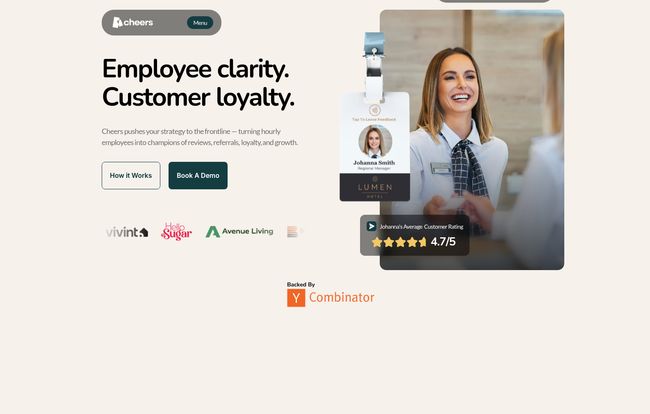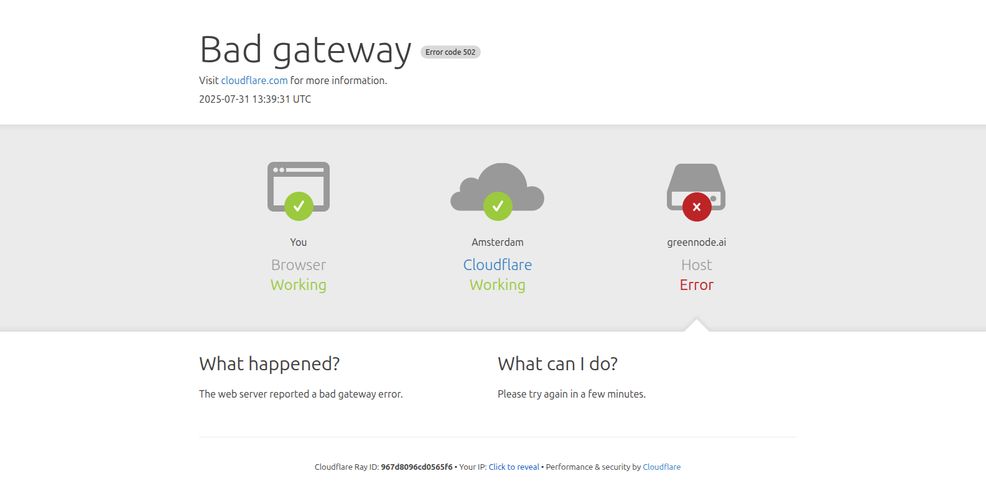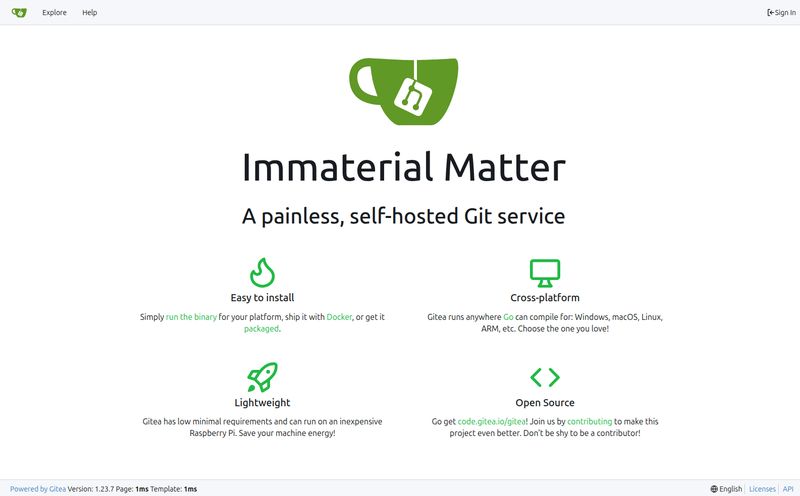I’ve been in the SEO and traffic generation game for a long time. We spend countless hours, and a small fortune, optimizing websites, running CPC campaigns, and tweaking every last digital pixel to perfection. But there’s always been a massive black hole in the data: the real world.
What happens when a customer interacts with your employee in their home, on a sales floor, or at a front desk? That crucial, human moment often vanishes into thin air. You might get a random Yelp review a week later (if you're lucky), but you have no real way to connect specific actions to specific outcomes. It’s a huge gap.
So when I came across a platform called Cheers, I was intrigued. The promise? To bridge that physical-to-digital gap with a simple tap. It sounded almost too easy. A super-app for in-person business backed by Y Combinator? Okay, you have my attention. But is it just another piece of shiny tech, or does it actually solve the problem?
So, What Exactly is Cheers? (Beyond the Buzzwords)
Let's cut through the marketing fluff. At its core, Cheers is a system built around NFC-enabled employee badges. Think of it like a smart ID card. When a customer taps their phone to the badge, it opens up a simple, direct line of communication. No fumbling to find the company's Google Business Profile, no trying to remember the employee's name, no app to download.
It’s like a digital business card, a review collector, and a performance tracker all rolled into one sleek package. It’s designed to capture feedback, referrals, tips, and most importantly, those coveted 5-star reviews right at the peak of a positive customer experience. For an industry that has struggled for decades to quantify the value of a great frontline employee, this feels… different.

Visit Cheers Reviews Inc.
How It Works in the Real World
Let's play this out. Imagine a technician from a company like Vivint (one of their featured clients) just finished installing your new security system. They’ve been professional, clean, and explained everything perfectly. You're happy.
Instead of the awkward, "Hey, would you mind leaving us a review online sometime?" they can simply say, "Glad we could help! If you have a second, you can tap my badge here to share your feedback."
You tap your phone. Boom. A clean, branded page pops up on your screen. It might ask for a quick star rating, offer a link to leave a Google review, or even provide a space for a private comment. The friction is almost nonexistent. And because the badge is tied to that specific employee, the company now knows exactly who is generating that positive buzz. It’s simple, elegant, and honestly, pretty clever.
The Data Goldmine: What Managers Actually See
This is where it gets really interesting for the people holding the purse strings. All that tapped data doesn't just disappear. It flows into a central dashboard that gives managers a real-time pulse on their teams.
From the glimpses I’ve seen, you get a clear breakdown of metrics like:
- Total Customer Interactions: How many times are badges getting tapped?
- Google Reviews Generated: The holy grail for local SEO.
- Average Star Rating: A top-level view of performance.
- Referrals Submitted: Turning happy customers into a sales channel.
And then there’s the leaderboard. It ranks employees based on these metrics, showing who your top performers are. Now, I have to be honest, I think leaderboards can be a double-edged sword. Used correctly, they can foster amazing, healthy competition and provide a clear path for recognition and bonuses. Used poorly, they can create a cutthroat culture. It all comes down to management. This tool gives you the data; what you do with it defines your company culture.
The Good, The Bad, and The Tappy
What I Really Like About Cheers
The biggest win here is closing the feedback loop instantly. The story they share about Vivint is honestly staggering—amassing over 50,000 five-star reviews in just four months and watching their Google rating jump from a 2.0 to a jaw-dropping 4.9. As an SEO professional, that number makes my head spin. That kind of reputation shift is worth its wieght in gold and can fundamentally change a business's trajectory.
It also empowers the employees. They're not just a cog in the machine; they're actively building their own reputation within the company. It gives them ownership over the customer experience they provide.
Some Potential Hiccups to Consider
No tool is perfect, right? First, there's the reliance on NFC. Most modern smartphones have it, but what about customers with older devices or those who have it turned off? The platform almost certainly has QR code backups on the badges, but the “magic” is in the tap.
Second, this is not a passive system. It relies on the employee to initiate the interaction. That requires training, confidence, and the right moment. You can’t just throw these badges at your team and expect miracles. The rollout needs a bit of thought.
Finally, and this is a question I’d ask during a demo, what are the privacy implications? How is all this customer and employee data stored and protected? For any business, especially larger ones, this is a non-negotiable point to clarify.
Who is This For, Really?
The easy answer is "in-person businesses." But let's get more specific. I see this being a home run for any industry where employees are face-to-face with customers on their turf. Think:
- Home Services: Plumbers, HVAC techs, electricians, installers (like the Vivint example).
- Property Management: Leasing agents, maintenance crews (like their client Avenue Living).
- Field Sales: Reps who are constantly meeting new clients.
- High-Touch Retail: Think furniture showrooms, car dealerships, or luxury goods where personal service is key.
- Even hospitality: I could see this being used by hotel concierge staff or event managers.
It's for any business that knows their people are their best asset but has struggled to prove it with hard data.
The Million-Dollar Question: What's the Price?
Ah, the classic B2B SaaS mystery. The Cheers website doesn't have a public pricing page. Instead, you'll find a "Book a Demo" button. This is pretty standard for platforms that need to be configured for specific business sizes and needs.
My educated guess? It's likely a per-employee, per-month subscription model. The cost will probably depend on the size of your team and the level of customization you need. It’s not going to be a $10/month app, but when you consider the potential ROI from a massive boost in high-quality reviews and leads, the investment could pay for itself very quickly.
My Final Take
So, is Cheers a gimmick or a game-changer? After digging in, I’m leaning heavily towards game-changer. It’s one of the smartest solutions I’ve seen to the age-old problem of capturing in-person sentiment. It connects effort directly to results in a way that’s tangible for both the employee and the employer.
It's not a silver bullet—its success still hinges on good training and a positive company culture. But it provides a powerful, modern tool to finally start measuring what matters most: a happy customer and a job well done.
Frequently Asked Questions
- Do customers need to install an app to use a Cheers badge?
- Nope! That's the beauty of it. It uses the phone's built-in NFC reader (the same tech used for Apple Pay and Google Pay) to open a webpage directly in their browser. No app download is required.
- What if a customer's phone doesn't have NFC?
- While most modern phones do, there's always a backup. The badges typically include a scannable QR code so that any phone with a camera can access the same link.
- Can the Cheers badges be customized with our company logo?
- Yes, the platform offers customizable NFC badges, so you can keep everything on-brand and looking professional for your team.
- Is Cheers only for large enterprises?
- The "Book a Demo" model often suggests a focus on mid-size to larger teams, but that doesn't rule out small businesses. If you have a team of frontline workers and value customer feedback, it's worth reaching out to see if there's a plan that fits.
- How does Cheers help with negative feedback?
- This is a great point. By providing a private channel for feedback directly on the landing page, Cheers can help you capture a customer's concerns before they go public on a review site. This gives managers a chance to reach out, resolve the issue, and potentially turn a negative experience into a positive one.
Conclusion
For years, the impact of great in-person service has been felt but rarely measured with precision. Tools like Cheers are changing that. By putting a simple, powerful feedback tool directly into the hands of employees, they’re not just collecting data; they're closing the loop between a real-world handshake and a digital thumbs-up. And in today's review-driven world, that’s a connection no business can afford to ignore.
Reference and Sources
- The official Cheers website: trycheers.com
- An overview of NFC technology: Wikipedia - Near-field communication



